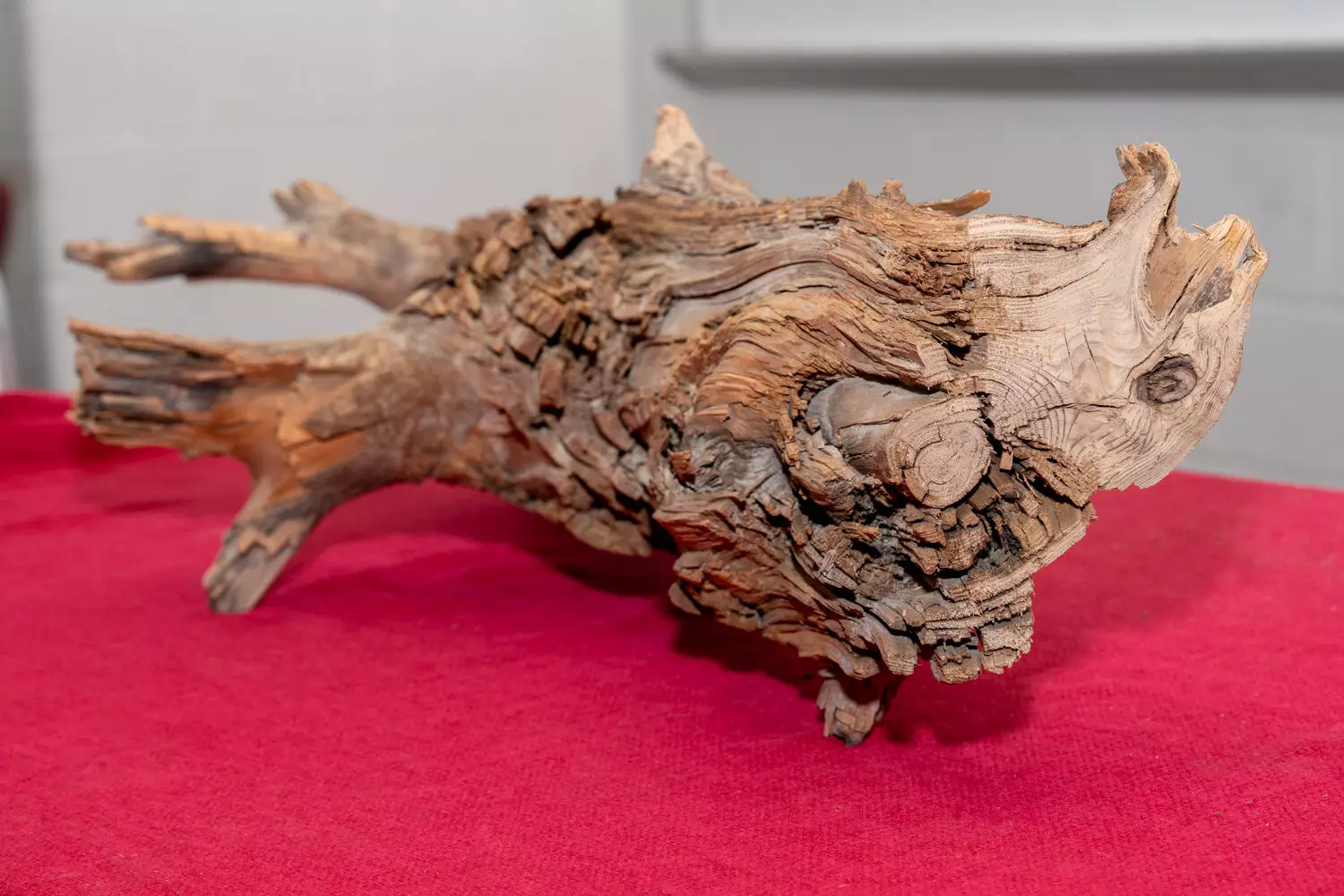The battle against climate change has taken many forms, from renewable energy innovations to carbon capture technologies. However, a recent study indicates that the preservation of ancient wood may unlock new strategies for mitigating the effects of climate change. Researchers at the University of Maryland, led by Professor Ning Zeng, have examined a remarkably well-preserved log dated at 3,775 years and unearthed from clay-rich soil. Their findings, published in the journal Science, propose an innovative method known as “wood vaulting,” aiming to sequester carbon by inhibiting the decomposition of non-commercial wood. This approach offers a unique lens through which we may view conservation and sustainability.
The discovery of the log occurred during a wood vaulting pilot project in Quebec, where Zeng and his team happened upon the specimen while digging. The preservation state of the log was astonishing; it had maintained over 95% of its original carbon even after millennia. Professor Zeng described it as being solid enough to potentially be crafted into furniture, revealing not just the astonishing nature of their find but also the environmental conditions assisting its longevity. The details of the log’s preservation underscore the importance of understanding the factors contributing to its state, primarily the low-permeability clay soil, which inhibited the penetration of oxygen and the activity of decomposers like fungi and insects.
This serendipitous discovery raises critical questions regarding how we might engineer environments conducive to wood preservation for climate mitigation. Unlike other studies that have looked at ancient wood samples, Zeng emphasizes a holistic approach considering both the wood and the soil surrounding it. The preserved log offers not only a historical narrative of ecological conditions but also a practical insight for contemporary climate strategies.
Wood vaulting suggests a radical yet straightforward solution to combating climate change: burying wood that has little to no commercial viability. This can include trees lost to wildfires, old furniture, and other forms of timber typically regarded as waste. By burying this wood in protective soil, it can continue to sequester carbon without contributing to greenhouse gas emissions, which occurs when wood decomposes.
This method challenges preconceived notions about tree planting, which has gained popularity as a straightforward way to increase the planet’s carbon sinks. While tree planting is undeniably valuable for carbon sequestration during a tree’s life, Zeng’s work highlights that emptying the soil of decaying wood could release stored carbon back into the atmosphere, reinforcing the urgency of finding alternative solutions like wood vaulting.
Zeng’s research points towards the significance of specific soil types in the successful application of wood vaulting. The study of the log revealed that clay soil’s low permeability is essential in maintaining its integrity over thousands of years. Such environmental conditions impede the flow of oxygen, a crucial element needed for decomposition. These findings highlight the variability of soil types across different regions, suggesting that wood vaulting could be more effective in some areas than others.
The study asks a pertinent question for climate scientists and policymakers: can similar conditions be replicated or engineered in different environments? Scaling wood vaulting as a viable climate solution hinges on understanding regional soil compositions and their capacities for preservation. Given that clay soils are widespread, this raises the possibility for broader applications in mitigating carbon emissions.
Although wood vaulting presents an exciting new direction, it should not operate in isolation. Zeng asserts that this technique is best implemented alongside other strategies aimed at reducing greenhouse gas emissions. The complexity of climate change requires a multifaceted approach, and wood vaulting emerges as a supplemental method rather than a standalone solution.
As we continue to explore various methods for addressing climate change, the integration of this wood burial strategy into broader environmental policies could provide a significant boost to global sustainability efforts. The ongoing research and development of wood vaulting may one day enable communities to utilize management techniques that convert waste wood into long-term carbon storage.
The study of the ancient log serves as a fascinating intersection of history and modern science, showcasing the importance of understanding past ecological conditions while innovating future solutions. This research invites both excitement and critical reflection on how we approach climate change, emphasizing that innovative ideas often lie within our ecosystems.
As Zeng and his colleagues delve deeper into the potential of wood vaulting, their findings could open a new chapter in climate strategy. By unearthing valuable insights from the past, we may be one step closer to fostering a healthier planet for generations to come. The melding of history with innovative practices may not only enrich our understanding of ecological preservation but also arm scientists and the public alike with effective tools to challenge climate change.

